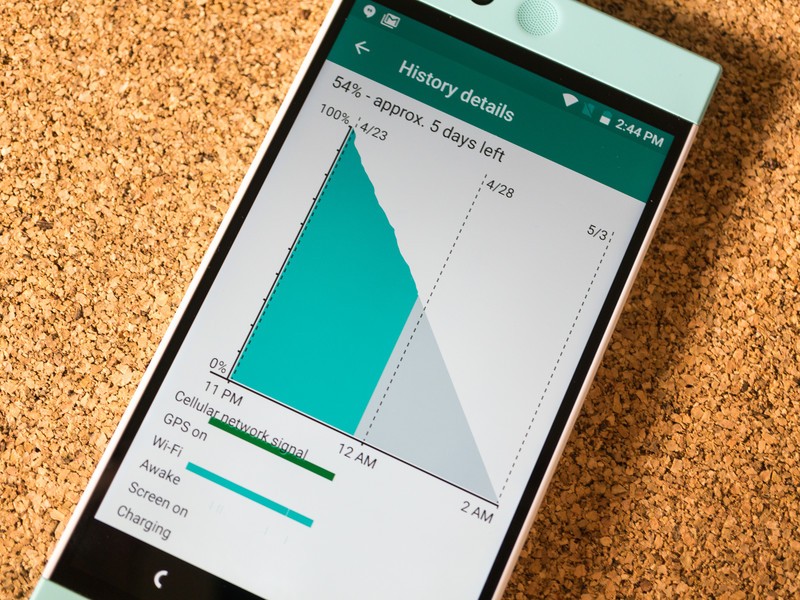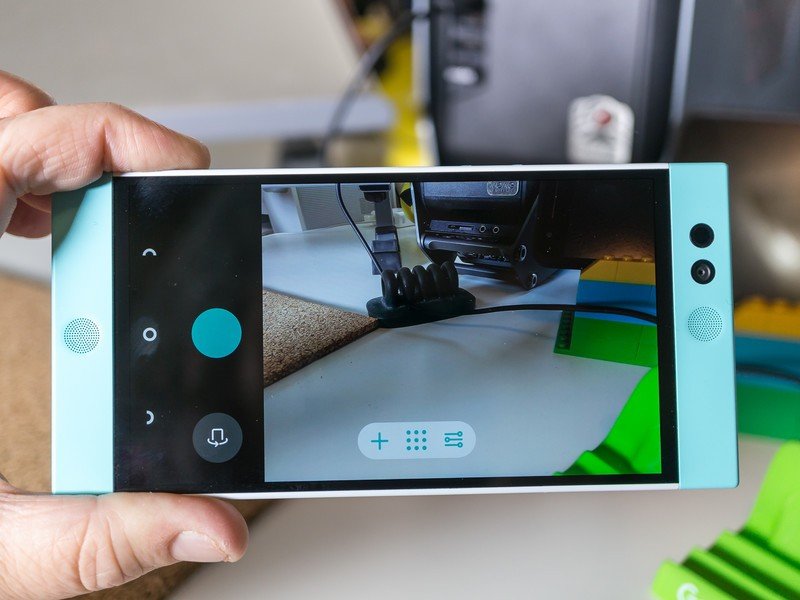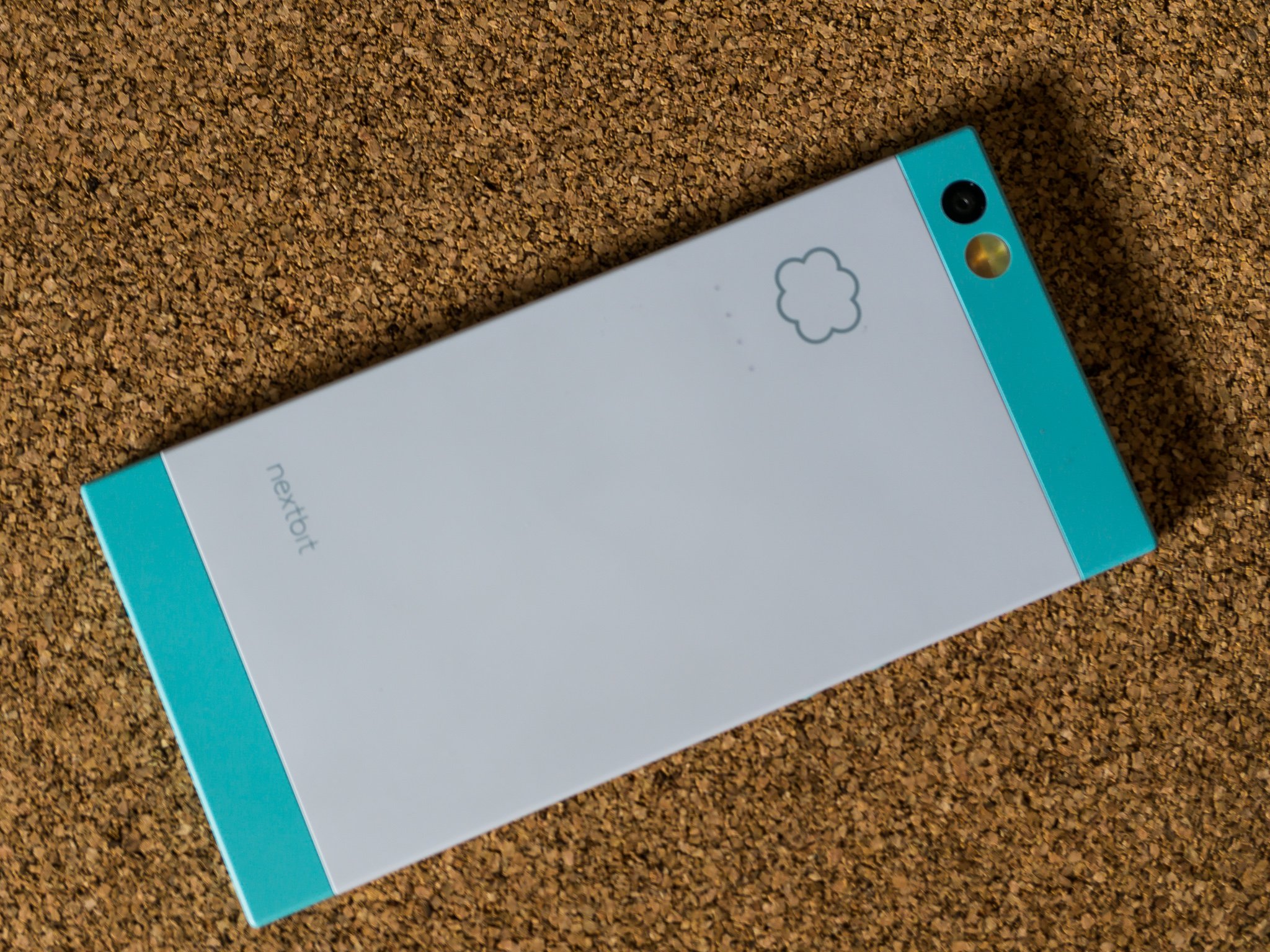Nextbit released the Android 6.0.1 update for the Robin, promising better performance and battery life, improved camera response and better audio tuning for both the front speakers and through the headphone jack. They've also made the Robin available through Amazon Prime, which makes it easier to buy.
I've had early access to the update, and have used it long enough to have a few things to say.
I liked the Robin with its original software configuration. The cloud syncing sounds a little gimmicky — backing up infrequently used apps to save space on your phone — but I found it worked exactly as intended without interfering with the day-to-day operation of the phone itself. The phone's design is a bit different from anything else out there, and it's done very well. You'll have a phone that looks great and handles well while being unique and stylish.
Coincidentally, three areas where things were "adequate" at best were battery life, the camera and the audio. Let's have a look at what's changed in those areas and see if things have moved beyond mediocre.
Battery life and performance

For a lot of people, how long you can use your phone between charges is one of the most important parts of the buying decision. In our original testing, I found the battery life to be enough to make it through an average day, though I was skeptical how it would hold up under heavy use and wanted to spend more time with it.
With the latest update, I'm pretty pleased.
What stands out the most is the standby time. Even with the Nextbit cloud software running alongside syncing everything Google on multiple accounts, an idle Nextbit Robin does little more than lightly sip at its battery capacity. Left sitting and doing whatever it needed to do under the hood for Five days and a handful of hours, the battery still had over 50 percent of its charge and the software tells me there are five days left of this type of non-use.
Robin feels faster and has better battery life.
How it performs with heavy use is something that still needs more testing, but there's obvious improvement here. Watching half of a Let's Play series on YouTube, spending time on Twitter, Google+ and Steam's forums on top of the normal emails, messages. Slack, Skype and general goofing-off — with mixed time on Wi-Fi and on T-Mobile's LTE — left me with no fear that my battery would be dead before I put my head on the pillow and my Robin on the charger. I still need to spend time doing the things I want to do somewhere the signal's poor so I can compare that to other phones, but as I mentioned above, there's obvious improvement here, and I like what I'm seeing.
Something that got barely a passing mention in the update notes is improved performance. I didn't think the performance of the shipping software was poor, but the new update makes the phone feel like it does everything better. We've remarked how a recent update fixed many performance issues on the Nexus 5X — which shares some of the internals with the Robin — and you'll experience something similar here. Things have been changed that allow the processor to run better without reaching its thermal throttle point, and the result is a phone that "feels faster" in many ways. Doing so without adverse affects on battery life is a nice part of the update, and deserves a specific mention. Well done, Nextbit.
A faster camera

Nextbit says it tackled the sometimes sluggish camera on the Robin, and they certainly have. This doesn't seem to affect image quality — the Robin still takes pictures that are good enough, but doesn't match what we see from phones at the top of the camera (and price) game like the Galaxy S7 or the LG G5. It's no slouch, and in capable hands you'll be able to get beautiful pictures, but it lacks the "idiot-proof" ease of use from some of the others.
Fast focus now matters because the shutter is faster.
A serious gripe was how long it took to actually produce a picture after you tapped the shutter button. On the shipping software, you'd regularly experience a delay of a full second or more — especially in HDR mode — once things were focused and ready until you actually took the picture.
That's gone. Nextbit says that this is now at least twice as fast, and it looks like they're spot-on with this assessment. The fast focus that comes from using phase-detection matters now, because taking the actual picture is also fast. This makes the Robin's camera acceptable, and you'll be using it more often because it works well. I was hoping to see some improvement to the white balance here (even though nobody at Nextbit claims it was adjusted or improved), especially in low light and under incandescent light, but image editing software like Snapseed can easily adjust the output now that you can get the picture you wanted instead of watching everything move out of frame while you were waiting for the shutter to fire. One other neat feature for the camera is a quick-launch ability. Double-tapping the power button brings up the camera, even while the screen is off.
Audio tuning

Disclaimer — this is an area where I pay close attention, so I might notice the impact of small improvements more than someone who isn't dialed-in on how things sound. Having said that, this is a pretty drastic move up in quality.
Nextbit worked with the French audio enhancement company Arkamys to improve the signal processing software, and it's instantly noticeable — in a good way. Music from both the front-facing speakers and the headphone jack sounds fuller, more separated and cleaner. This carries well when turning the volume up, and even at maximum levels you'll appreciate clearer (and louder) sound.
Compared to other phones using the same hardware, the audio improvements are remarkable.
Audio and the way your music sounds is a subjective thing. But these are improvements everyone will recognize and enjoy, no matter what kind of music you listen to or how you listen to it. And it doesn't just improve music — all audio, including the new custom ringtones from DJs Lauren Lo Sung and Giraffage benefit from the newly-tuned signal processing, and even the speakerphone is improved.
These changes won't transform the Robin into one of those products audiophiles will rave over, but they do make for a remarkable improvement. I was admittedly skeptical over these claims at first, but find that Nextbit has done a wonderful job with the Snapdragon 808's on-board Qualcomm Hexagon QDSP V56 DSP, and compared to other phones that use the same hardware like the Nexus 5X, the difference is remarkable.
I didn't have a chance to try the new AIAIAI TMA-2 headphones specially tuned for the Robin, but I imagine they make things even better here. I'll see what I can do about finding a pair to test with, and will revisit if I can make that happen.
The bottom line

This is a great update. That's simple, but sums it up nicely. Not only does the Robin get Android 6.0.1 (with the April security patch) with overall improvements to performance and security (and emojis!), but specific areas where the Robin needed improvement were addressed in demonstrable ways.
With the phone now available through Amazon, I'm even more apt to recommend it to anyone looking for a phone in this price range who doesn't want to be tied down to a carrier's whims.

Jerry is an amateur woodworker and struggling shade tree mechanic. There's nothing he can't take apart, but many things he can't reassemble. You'll find him writing and speaking his loud opinion on Android Central and occasionally on Threads.

